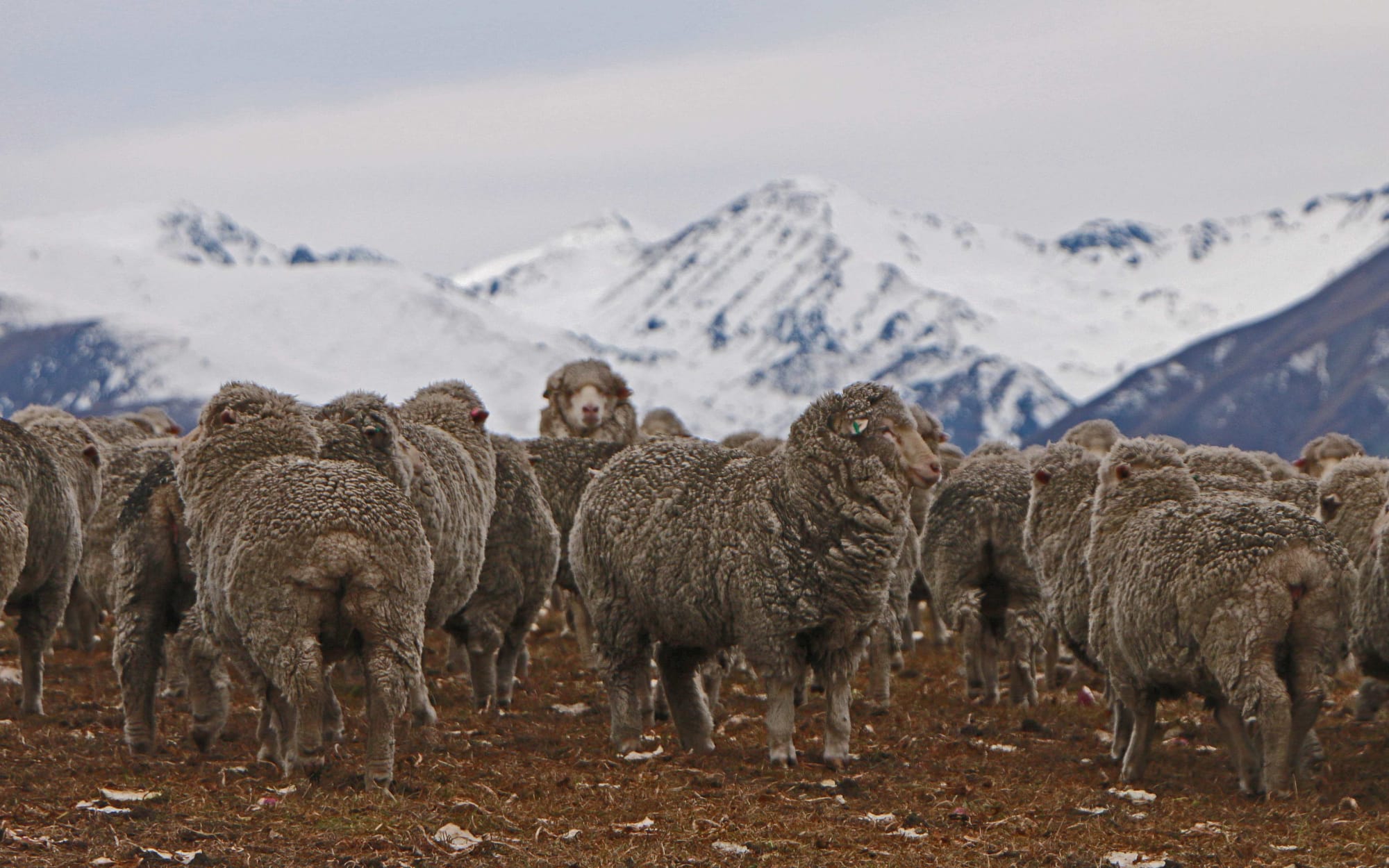There is more farmland than conservation land in New Zealand. But as domestic and international tourist numbers continue to climb, there are fears some farmers will stop letting the public through their land.
On a wet winter's day, rain is beating down on the Clutha River. The turquoise water swirls and hisses past the river bank, and just under the surface a trout lingers, camouflaged by the brown Didymo, or rock snot, that clings to the rocks.
"Oh there's a big fish sitting just there!" Cliff Halford declared excitedly, "Did you see it?"
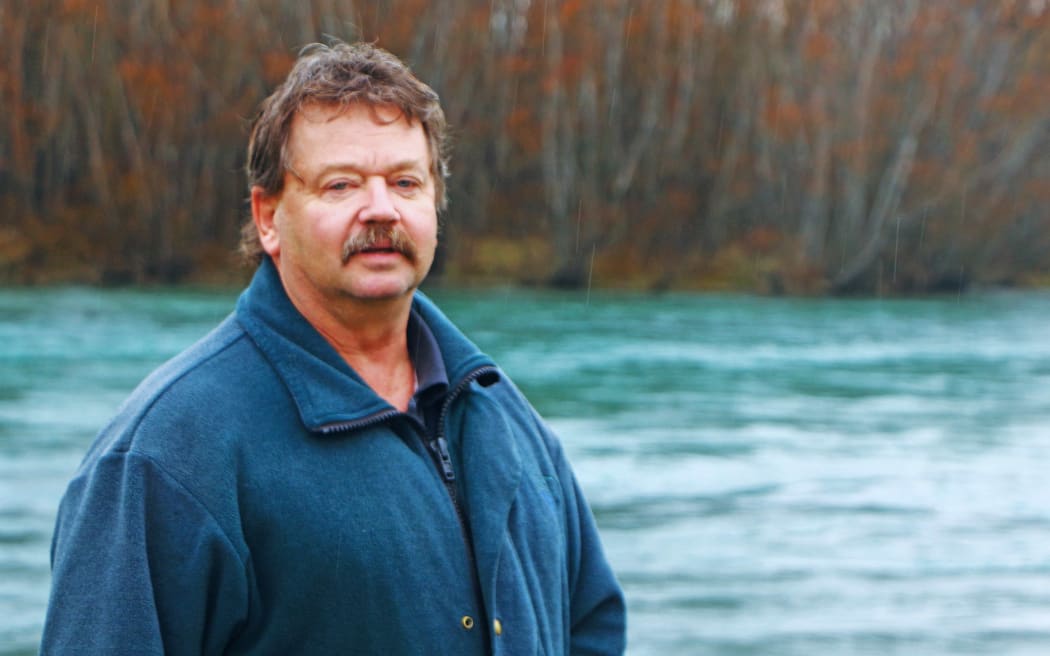
Access to the Clutha river for fishing is declining according to Fish and Game Otago officer, Cliff Halford, Photo: RNZ Insight / Maja Burry
Mr Halford has an eye trained for spotting trout - having worked as a Fish and Game officer in Otago for more than 30 years. He knows this 338 kilometre long river well and has spent countless hours working alongside it.
But Mr Halford said it was getting harder and harder for fishing enthusiasts to cast their rods into the Clutha - due to the withdrawal of public access through private land leading to the river.
"Right through the basin here, there was open-ended access back in the early days, certainly through the 70s and the 80s and beyond.... and just over time, land ownership has changed and a lot of those access points have closed up," Mr Halford said.
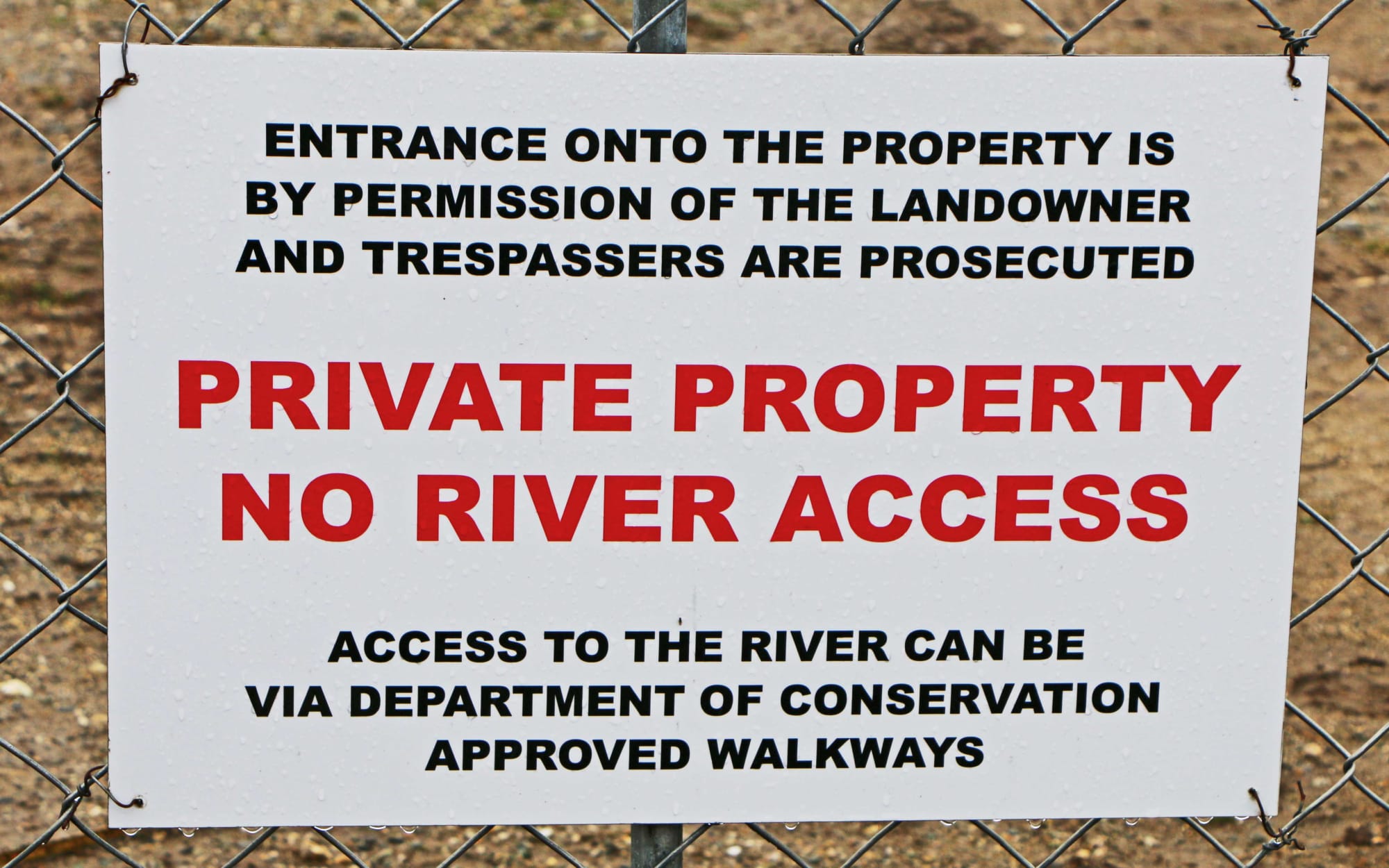
Photo: RNZ Insight / Maja Burry
"There's been massive land change, intensification of farming and a lot of other development along the water way as well.... and when farmlands are being broken up into smaller lots and new people have come to the area [with] different perspectives on life and what they want to do with their land," he said.
A draft report released earlier this year by the Walking Access Commission found tourist numbers were increasing rapidly throughout New Zealand, but particularly in the tussock land of the Mackenzie Country, down through Queenstown Lakes and across to Central Otago.
The commission's acting chief executive, Ric Cullinane, said this combined with a fast-growing population had seen pressures reach new levels and it had started to hear worrying messages about the potential for the withdrawal of access to private land by landholders.
"While a farmer or landholder might be happy with two or three thousand people across his property in a year, different kettle of fish when there's 20-30 thousand, and in some cases even up to 100 thousand," Mr Cullinane said.
"Large numbers of people also require more suitable infrastructure and information on how to behave and where not to go and what to do," he said.
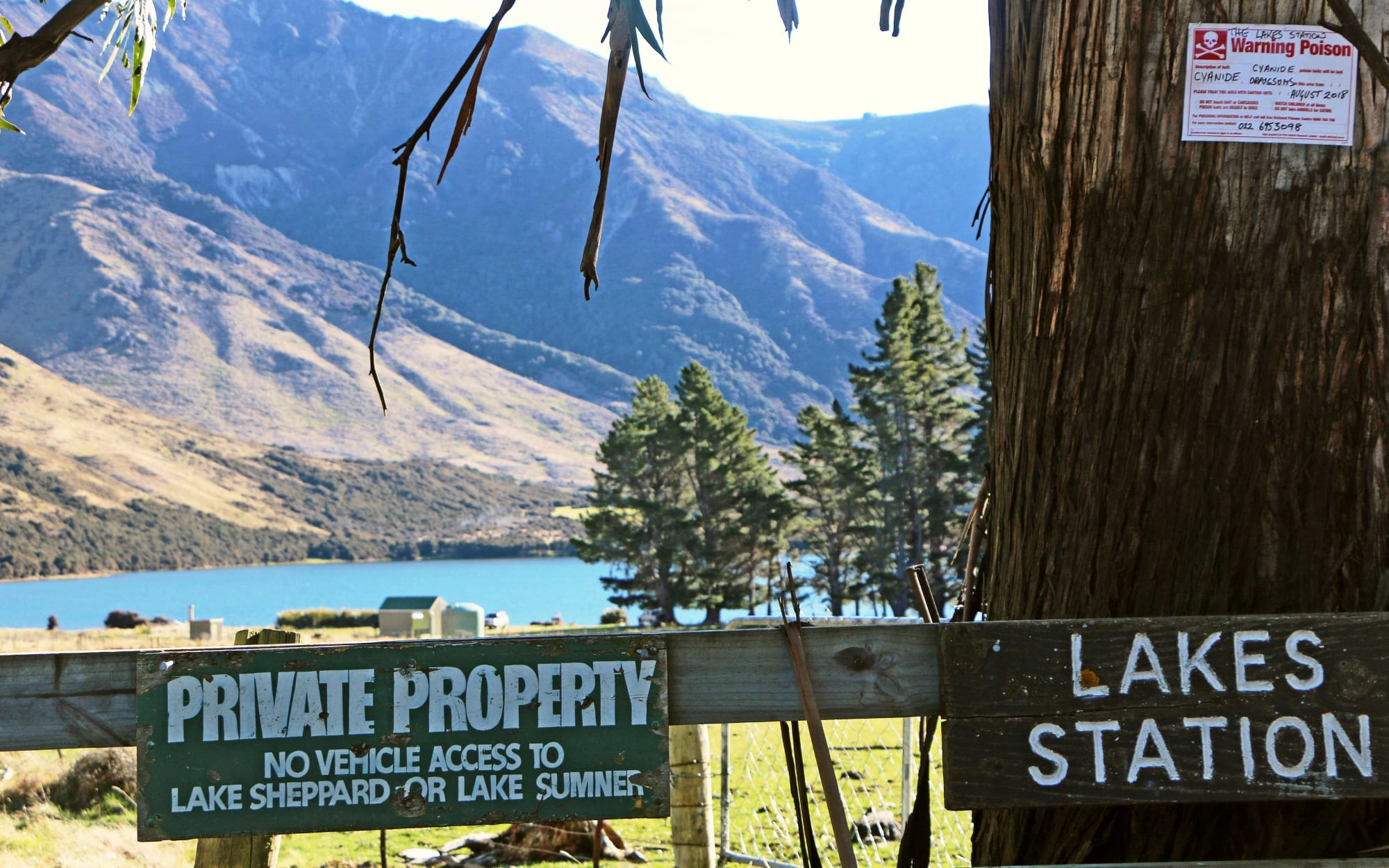
Lakes Station in North Canterbury Photo: RNZ Insight / Maja Burry
Mapping data held by Land Information New Zealand shows there are at least 25 thousand tracks across New Zealand - ranging from 20 metre-long paths right through to multi-day tramps. It's not clear how many of those tracks cross through private land.
Mr Cullinane said it was essential that access to the outdoors was maintained and stakeholders were going to have to find ways of managing large numbers that would work for everyone.
"That's something that we need to work with all players to resolve and I think the first step is to create some sort of strategy or narrative on how we manage access in the South Island especially, and out of that will drop a list of priorities and once that's established and there's agreement on that we can step through finding funding for it," he said.
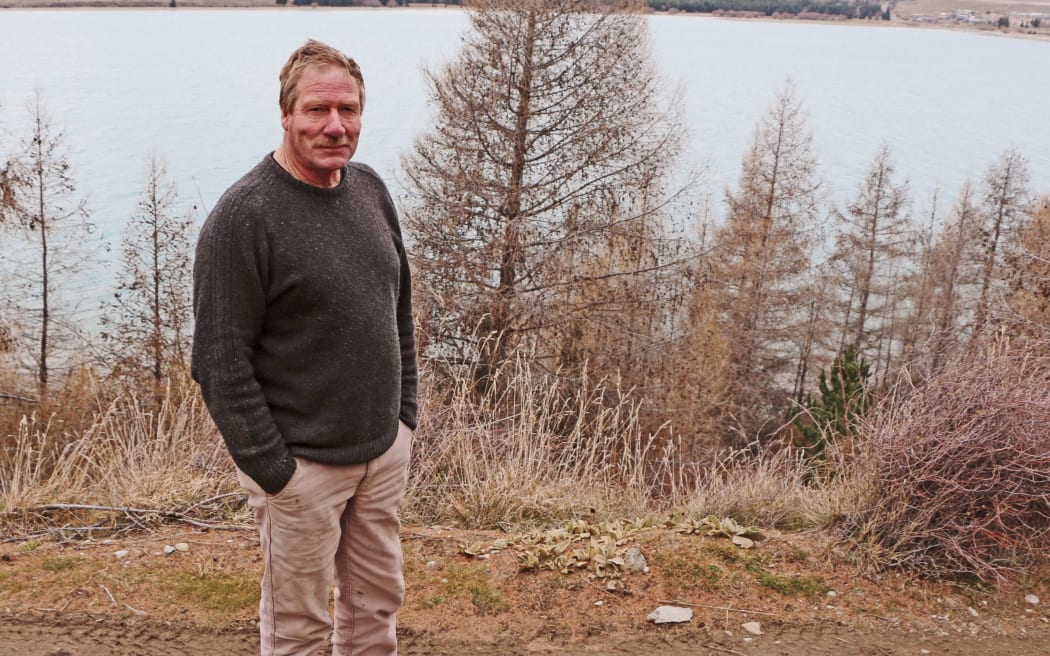
The owner of Balmoral Station on the edge of Lake Tekapo, Andrew Simpson Photo: RNZ Insight / Maja Burry
One High Country farmer who is feeling the pinch from increasing visitor numbers is Andrew Simpson, who owns Balmoral Station at Lake Tekapo.
About 100 thousand people were now using the Mt John Walkway on his property each year, Mr Simpson said.
He said while the Department of Conservation helped with some track maintenance, it was requiring more and more attention, costing tens of thousands of dollars.
""The maintenance of the tracks is a huge problem now..... we believe that we need to keep the maintenance up and it's something that whilst we don't want to do it, I think that we have to do it," he said.
Insight is on Apple Podcasts: subscribe and give us a review - Or head to Spotify or wherever you get your podcasts
A report released last month by Professor David Norton from the University of Canterbury's School of Forestry lists sheep and beef farms, as the most extensive land use in New Zealand, accounting for 40 percent of the total land area.
Public conservation land was the second most extensive land use - sitting at 31 percent.
Andrew Simpson believed farmers had a role to play when it came to providing access to the outdoors, even when it could be problematic.
"It's not whether you're happy or not, it's part of being part of a community and we've just got to be seen to be a responsible community person. We enjoy people enjoying it [the walkway].... it's a part of why we farm here I guess, it's a beautiful part of New Zealand," he said.
But Mr Simpson said there had to be a way that farmers were compensated for providing opportunities to the public.
"Whether it's through a consenting process, where they allow you to get consents for other parts of development on your property don't know," he said.
There are high country farms that have found other ways of making access work for them.
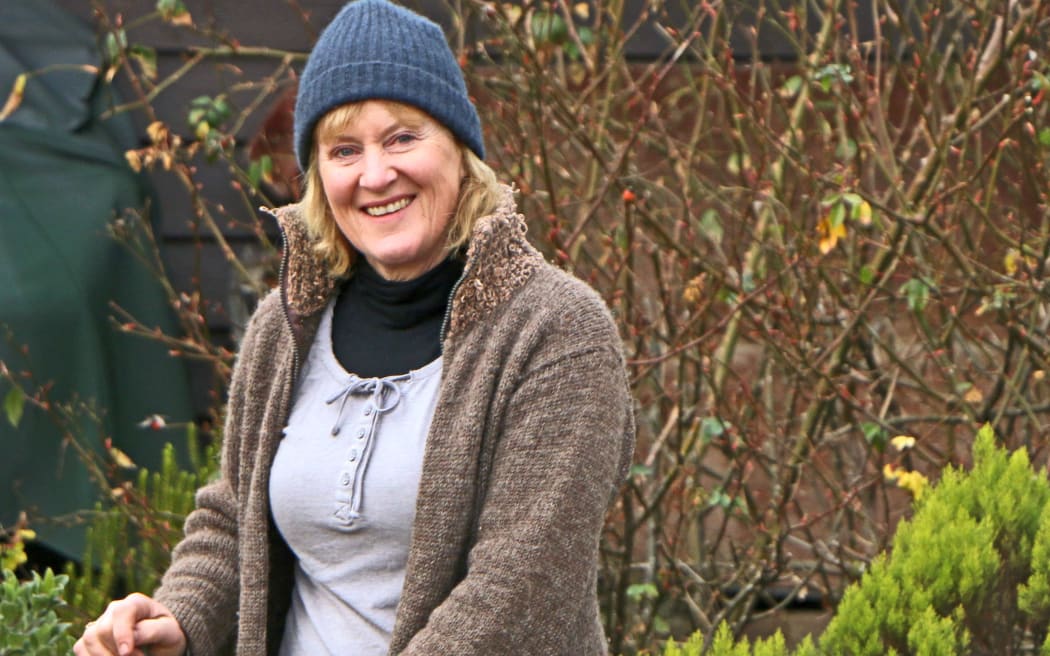
Four peaks station owner, Jo McAtamney and her husband run their own private walking track Photo: RNZ Insight / Maja Burry
On Four Peaks Station - a high country farm in South Canterbury owned by Jo and Steve McAtamney - sheep, beef and deer farming isn't their only source of income.
In November, when the weather is warm enough, the McAtamney's will re-open their private four day walking track through the 4000 hectare station.
Each year about 200 people walk the 50 kilometre track, which Jo McAtamney said they established in 2006 to make some extra income, at a time when lamb prices were low and farming was tough.
The cost of the walk is $435 dollars for four nights accommodation, including pack transport from hut to hut, a price Mrs McAtamney said people seemed happy to pay for the premium experience.
"People have said to us that they like to know that they are going to get a bed, it's guaranteed, so they're happy to pay for that and they're going to be looked after... [there's] a bit more of a personal touch with this sort of walk," she said.
A shift in attitude.
Federated Farmer's High Country spokesperson, Simon Williamson, said the public needed to recognise that access through private farmland was at the land-holders discretion and it was not a right that should be assumed.
He said when a farmer did deny, access it was generally because of a farming operation was taking place, such as lambing or spraying, or it was for for safety reasons.
"You just can't have people walking willy nilly," he said.
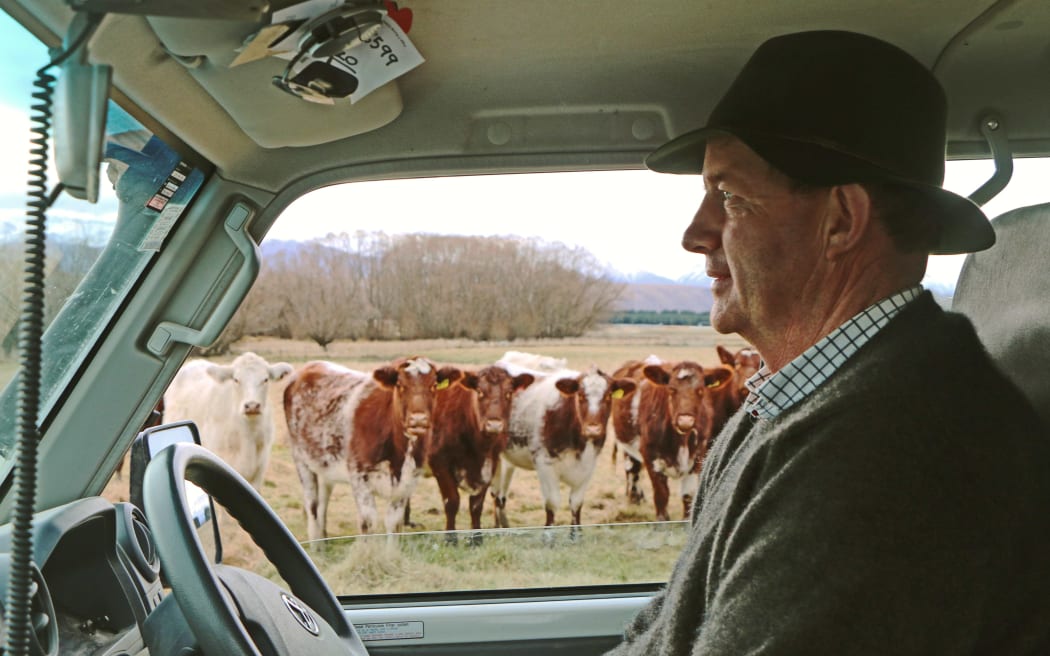
Federated Farmer's High Country spokesperson, Simon Williamson, says people do not have an automatic right to access private property. Photo: RNZ Insight / Maja Burry
"The climate changes quickly in the High Country, you get heavy rain in the alps, rivers come up, creeks come up.....and although everyone goes in there with the right intentions the only person who ends up being the ambulance at the bottom of the cliff is the farmer," he said.
A 2015 Colmar Brunton Poll commissioned by the Walking Access Commission found 64% of respondents said they would feel nervous about asking private land owners for access to their land.
However, of those who had asked, 92% said they had been granted access.
Mr Williamson said for hundreds of years people had worked on the basis that if you ring up and ask permission, the landholder would very seldom tell them they couldn't go somewhere.
"But just in the last 10 to 15 years there seems to be a ground swell of people saying that they don't need to have [permission for] access, they should have the right to walk everywhere and I think it's very... it's uninformed, I don't know what backing they think they have got to do that," he said.
Mr Williamson said there were plenty of Department of Conservation walks people could do if they didn't want to call and get permission for access through private land.

Cow and recently born calf in McKenzie District Photo: RNZ Insight / Maja Burry
